Bret Rasmussen, Ride Rasmussen Style and Ski-Doo’s G4 REV Summit
We all know having friends in both low laying lands and high mountain places is a wonderful thing.
Take Bret Rasmussen, a friend on a high mountain place, who is the owner and master clinician of Ride Rasmussen Style (RRS), who is a type of friend we at Snowmobile.com call “family.” Rasmussen, sponsored by Ski-Doo and FXR, where he is known as an “Ambassador,” or “Sponsored Athlete,” is at home in the winter mountain ranges outside West Yellowstone, Mont., or Russia, to name two of many.
Rasmussen, who for six winter seasons, teamed up with Chris Burandt, owner Burandt’s Backcountry Adventures, to bring to market a How-To video series titled “Schooled” where the two condensed their advice on tree running in the steep-and-deep backcountry. But, a DVD can’t replace practical knowledge that comes from experience; and riding with Rasmussen is an experience above a typical mountain snowmobile ride. We’ve been with Burandt as well, and no DVD can replace his on-the-mountain tutoring.
For several years, we have ridden with Rasmussen, sometimes by accident (“Oh, look who we ran into.”) and sometimes by invite. Well, that is us inviting ourselves to be with him and his instructors, which is slightly more professional than “Oh, look who we ran into.”
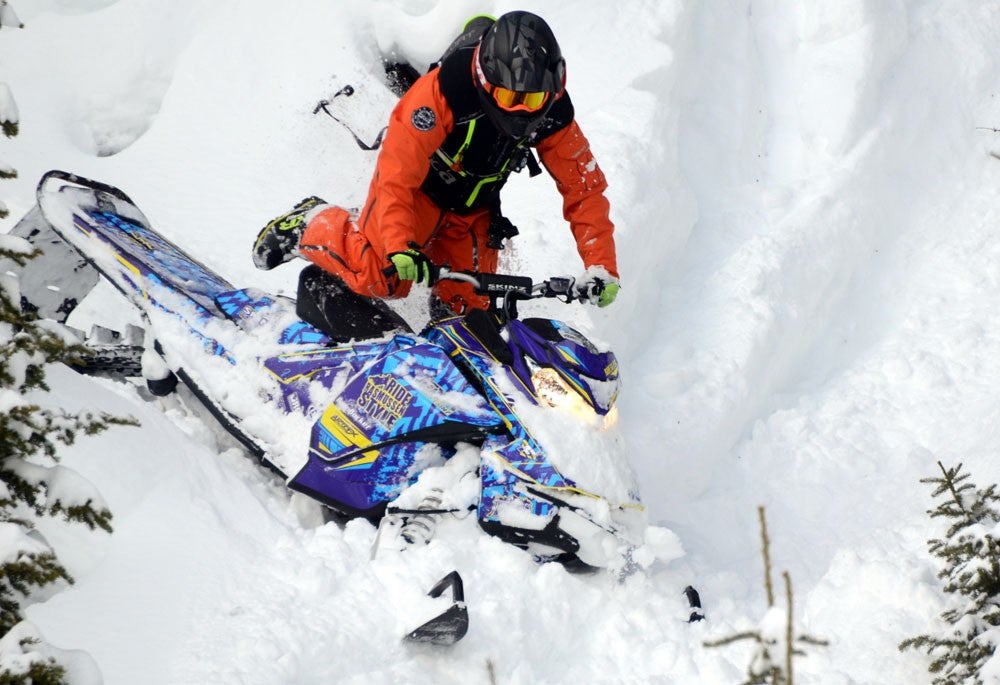
Veteran RRS guide, Aaron Roesler, begins swinging his right leg to the left board in anticipation to a possible wrong foot forward descent. Reading the terrain is crucial on bumpy descents. Note the low bars on the G4.
This past February, I and fellow Snowmobile.com teammate, Kevin Allred, spent a couple days with Arctic Cat riding its early prototype M8000s on the mountains near West Yellowstone, Mont. and Island Park, Idaho. After whacking trees and ravines with Cat, we migrated to Rasmussen’s lodge to talk everything FXR, Ski-Doo Summit and mountain snowmobiling, the latter being our main focus – mountain riding on Ski-Doo’s Gen4 REV 850 Summit X.
After spending two months at that time, on a Gen4 Ski-Doo Summit X 165 and subsequently riding with Rasmussen over a period of 20 years, we wanted to know how the Gen4 Summit changed Rasmussen’s techniques, those skills he impresses upon his students.
As I sat at the lodge’s dinner table, peering into Rasmussen’s eyes, pen in hand, notebook on table, I asked, “How has the G4 improved your RRS’ curriculum; what new techniques have you incorporated into your daily courses?”
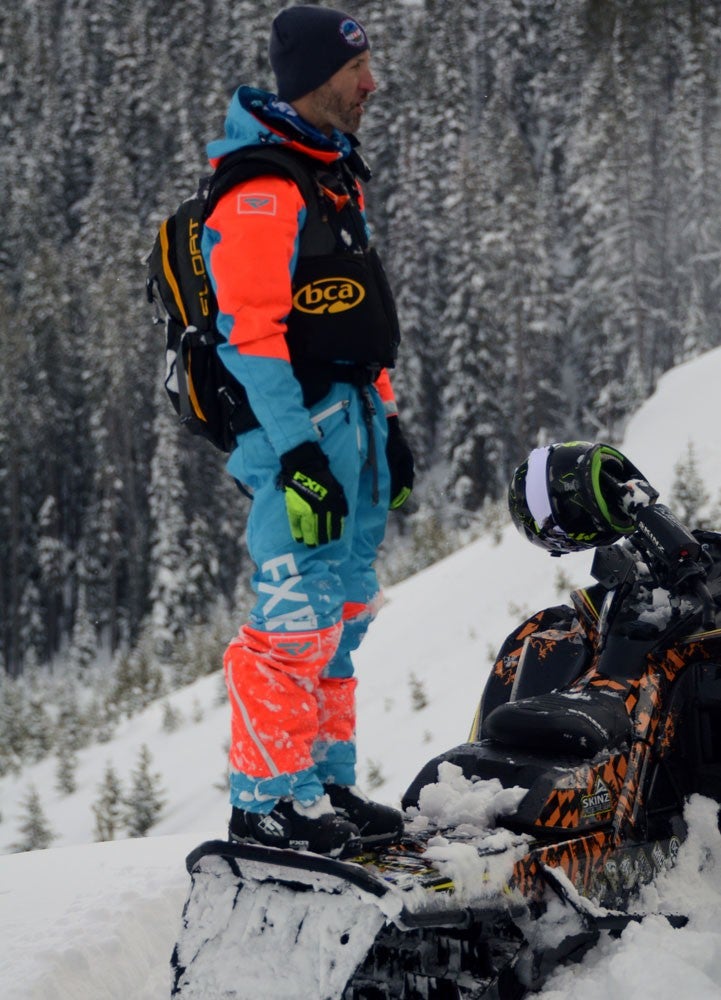
‘The Professor,’ Bret Rasmussen is as large as life in the backcountry world. He is always giving encouragement while sharing wisdom. He will be the first to say, the G4 Summit is a fantastic tool to learn on.
The peering continued. I waited, believing Rasmussen was going to report to Snowmobile.com the G4 Summit was the calculator Einstein or Galileo wished they had, or the paint Michelangelo or Vincent van Gogh wished they used.
Waiting…waiting…
Then with a quizzical look, Rasmussen said, “I don’t understand your question.”
My goodness, what did I just ask?
I restate my question to “The Professor,” as he is known.
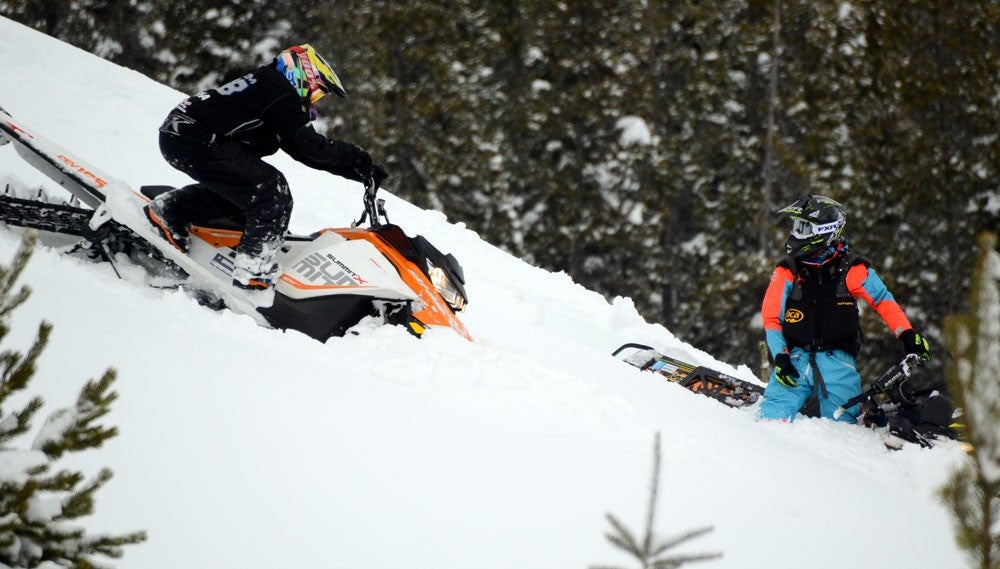
Bret Rasmussen watches and guides a student through the learning process. Here, a RMSHA hillclimber is learning to master downhill sidehill and how to set the G4 on edge.
Throat cleared, journalist poker face on. “How has the G4 changed your instructing, Bret? What can you do on the G4, that is instruct what you could not before on the XM?”
Rasmussen answered with the wisdom only humble professors have: “Nothing.”
Silence.
Awkward.
Then came Rasmussen’s well-carved answer, delivered with the same mastery he uses to carve a line across a steep hillside blanketed with Lodge Pole pine trees.
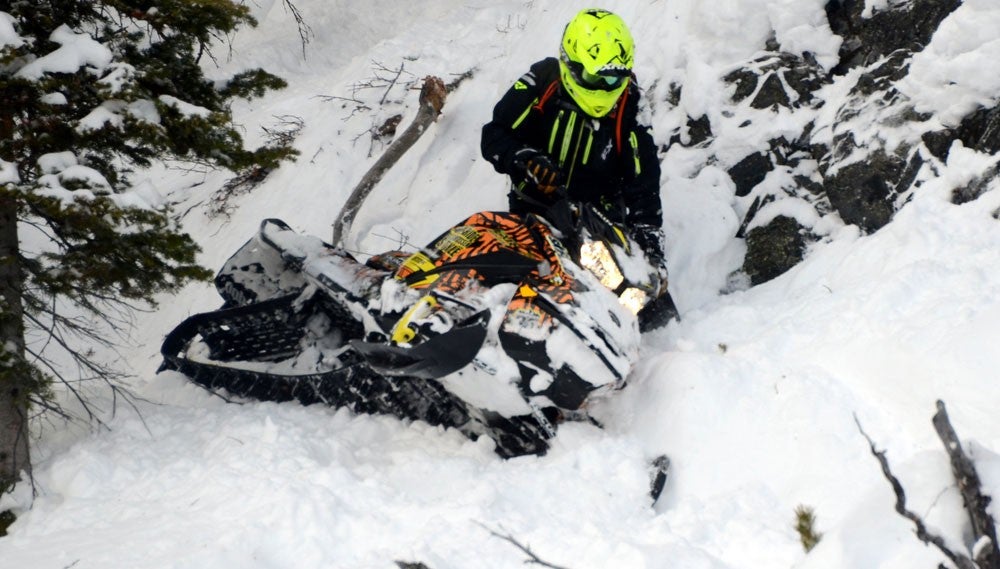
Test rider for Snowmobile.com, Kevin Allred, takes an RRS-prepped G4 Summit X off a rocky hillside to give prove RRS’ training is correct, as well as the balance the G4 delivers.
“The principals I and my guides teach are the same.”
Wait..wha…?
He continued, “The G4 makes it easier to learn the skills Ride Rasmussen Style teaches. The turns and maneuvers are simpler to initiate with the G4. But, everything we teach are techniques any mountain rider can use on any mountain snowmobile; nothing’s changed. The G4 makes it easier for us to teach and demonstrate.”
So much for the new calculator or paint answer I was looking for.
Who’s the professor? Rasmussen is. Not me. Check.
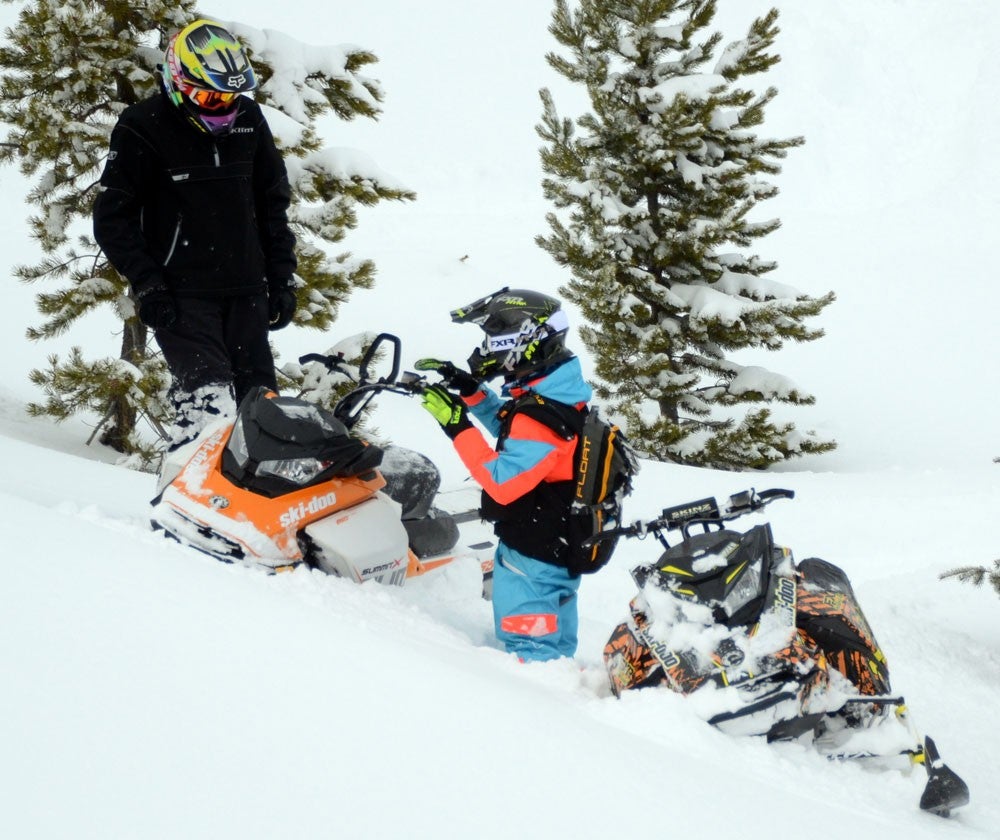
Bret Rasmussen explains to his client/student how to use the snowmobile’s weight to an advantage; not fight it, but use it.
However, we can’t put aside the fact the G4 Summit, with its balance and flashy torque, removes some fear about mountain riding. Or from another point-of-view, helps a mountain rider, who is mediocre, become a better rider than what they once were – regardless of the snowmobile they were riding before the G4 days. Let’s give some validity.
Prior to our ride with Rasmussen and his staff, Kevin Allred and I rode with Arctic Cat, as we mentioned early on. While on the Cat ride, my riding was awful; my right knee had collapsed – bone-on-bone – from years of abuse: riding, sports and a not so-good diet. I was in need of a new knee, but had to wait for the snowmobiling season to end. The folks from Arctic Cat witnessed my riding ability dropped to below amateur. But, I pushed on through the pain and imbalance.
After leaving Cat’s mountain headquarters, and riding with some of Cat’s best mountain men, I had Rasmussen the next day. What to do? Ride.
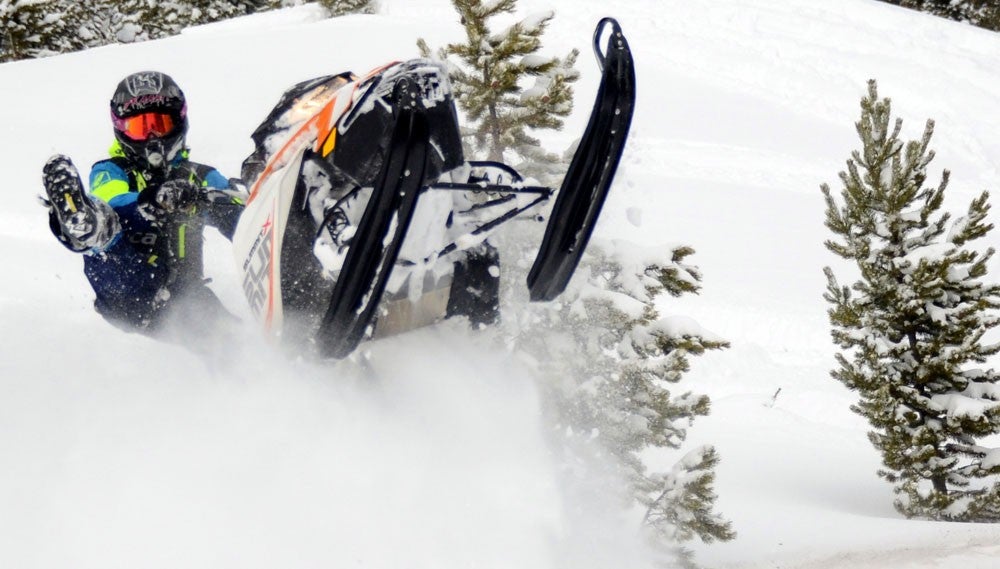
Luke Read take the Snowmobile.com Ski-Doo G4 Summit X 165 for a tailwalk and launch. RRS guides much on the G4’s 850 power all day long.
On class day, Kevin Allred chose a custom Ride Rasmussen Style G4 Summit, I rode our stock 165 G4 Summit X. With a belly full of Aleve and headache relief Tylenol, the day’s work was not bad. Though my skill level was same as am RRS student, I had confidence the G4 Summit would help me successful.
This is our segway to our next topic, watching Rasmussen and his guides teach a young student. In our group that day, was a father-and-son duo. The father bought a day’s lesson for his son as he, Dad, wanted to help his son fulfill a wish: be a better mountain boondocker. This student was a hillclimb competitor on the Rocky Mountain Snowmobile Hillclimb Association (RMSHA) circuit. This rider aboard his AXYS Pro-RMK was wicked fast and highly-skilled at going straight up a hill and making cuts around trees. And could he jump. But, slow cross cuts across a mountain side infested with trees, challenged this racer as the hillclimber in him fell off the mark. He was out of his element; wrong-foot forward riding and manipulating his snowmobile while riding over the handlebars was a skill-set he did not possess.
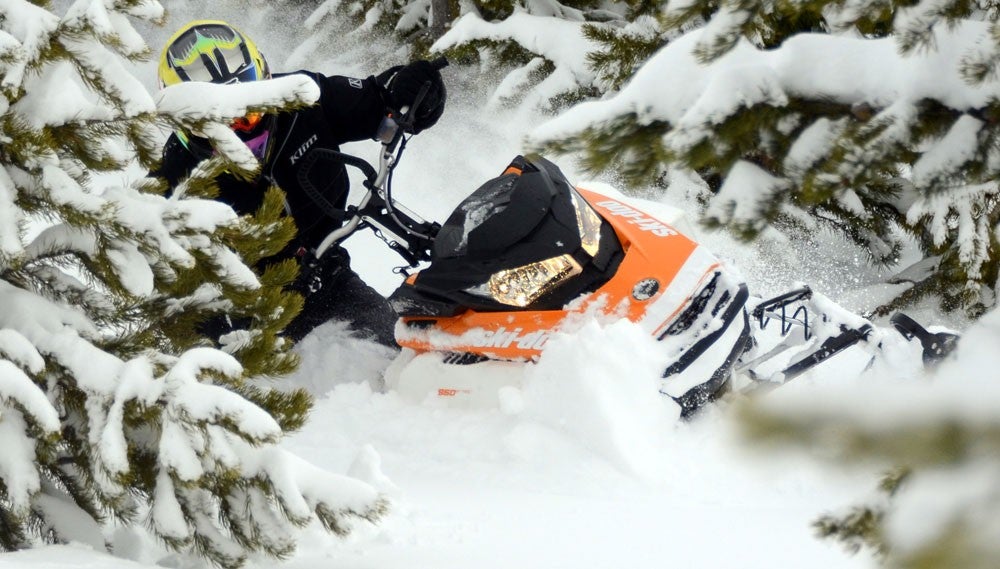
The RMSHA hillclimber student takes a G4 Summit X through some steep terrain where the trees are thick. This is do or die. The Ski-Doo G4 Summit X makes this game, easier to win.
Wanting to test the G4’s character, we asked the student to park his AXYS Pro-RMK and take the Snowmoible.com G4 Summit X 165 to be his driver’s training vehicle. With that, Rasmussen and Yellowstone Arctic/Yamaha guides Luke Read and Aaron Roesler, set to elevate this student’s skills. Rasmussen instructed by talking the student through what he needed to perform. Read and Roesler demonstrated The Professor’s words. In slow moving minuscule steps, the hillclimber began to thaw some bad habits and freeze-in some new and better habits. When we asked the student how he felt about the G4, his overall comment, in summation, was “The G4 is so easy to handle, I kept overriding it; it doesn’t take much to ride it.” And so it is, indeed.
Back to the professor and his schooling the Snowmobile.com team. The G4 Summit did not change the skill set Rasmussen and his Yellowstone Arctic/Yamaha guides pass on to Ride Rasmussen Style students, but make the delivery easier and student acquisition of said skills, also easier.
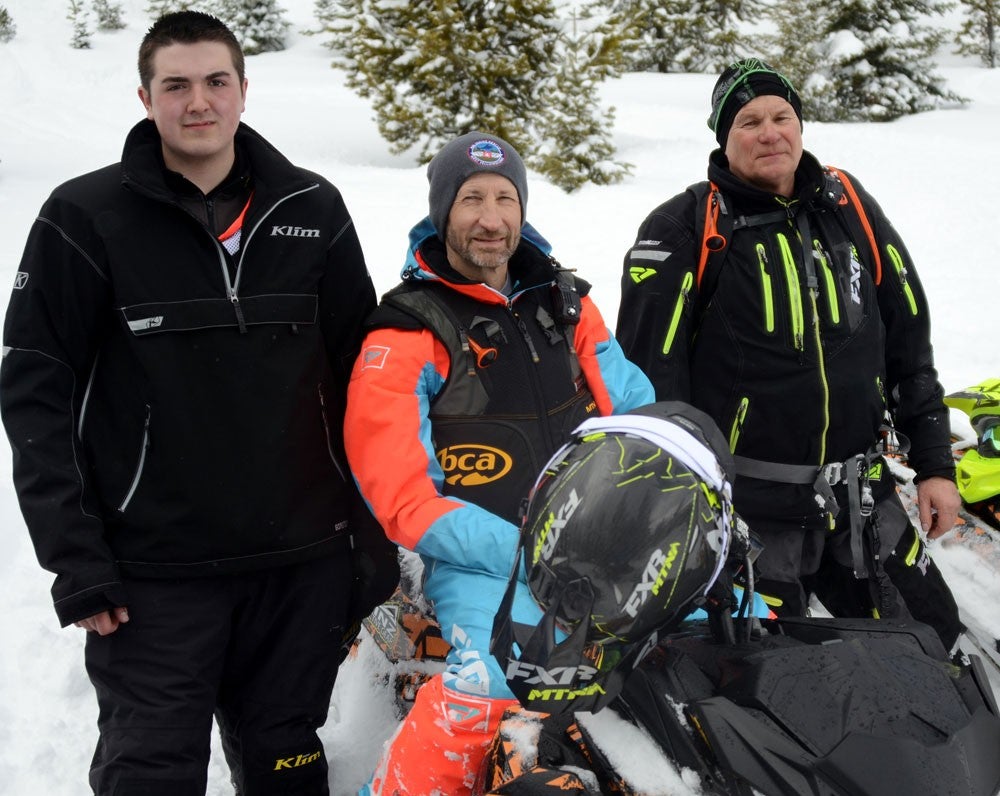
An RRS student (L) with Rasmussen (C) and Snowmobile.com test rider, Kevin Allred (R), who also has participated in Rasmussen’s first aid and avalanche courses.
For your peace of mind and safety, RRS Yellowstone Arctic/Yamaha guides were personally schooled by “The Professor” himself, prior to RRS employment. Rasmussen and all his YAY guides have attended and passed a rigorous 48-hour Wilderness First Responder where he and all RRS/YAY guides are certified in backcountry medical first-aid. In addition, all RRS YAY guides have participated in a 36-hour Level-1 avalanche certification class followed by a 48-hour avalanche Level 2 certification class. Ride Rasmussen Style workers all carry the best avalanche and rescue equipment to ensure client safety is at the highest.
Ride Rasmussen Style Clinics are offered exclusively by Yellowstone Arctic/Yamaha an equal opportunity employer and permitted under a special use permit with the United States Forest Service (USFS) and the Gallatin Custer Ranger District.
To be legal, the Ride Rasmussen Style Clinic, headquartered in West Yellowstone, Mont., is an equal opportunity employer, and all clinics are permitted under Yellowstone Arctic Yamaha under a special use permit with the United States Forest Service (USFS) and the Service’s Gallatin Custer Ranger District. Ride Rasmussen Style abides to all laws from safety, boundary respect and pack-it-in and pack-it-out stipulations.
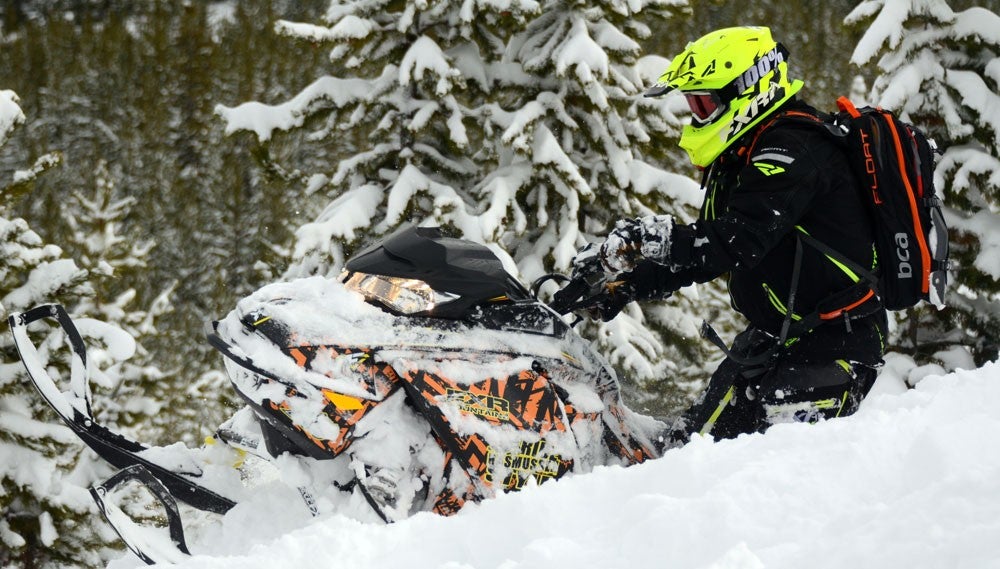
Kevin Allred for Snowmobile.com begins setting his left leg into the snow while the right leg balances the snowmobile from the left runningboard. RRS guides teach many positions to balance sled and rider.
Pulled from the Ride Rasmussen Style website is this:
“Clinics help you advance your abilities. Don’t feel like you will be holding the group back or waiting for the group. It’s our goal not to put on a maximum number of miles each day, but to focus on exercising technique to improve your rider ability. Everyone will be challenged well beyond their limits and enjoy the adventure to the fullest.”
To close out, is the G4 Summit “A game changer?” We hate that cliché, but it is the buzz phrase. Yes and no. It does not change the game, but it makes the boondocking game easier to learn, to compete in, and to win at. Rasmussen told us so, and we believe him.





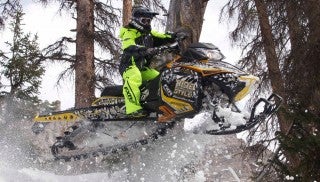


 Your Privacy Choices
Your Privacy Choices